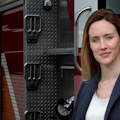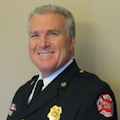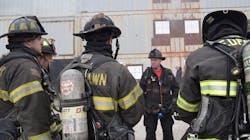Leading Under COVID-19: Is There Any Room for Humanness?
Remember the Queen song "Under Pressure?" In the first verse, singer Freddie Mercury croons, “Pressure, pushing down on me, pressing down on you, no man ask for, under pressure that burns a building down, splits a family in two, puts people on streets." Sounds too familiar, doesn’t it?
COVID-19 has brought with it increased pressure(s) that are pushing down on you, those you lead as well as just about everyone else, too. So, in the current circumstances can there be room for your own humanness? The “right” answer is yes, but maybe your “real” answer is more like NO! Offering yourself some grace in times of increased strain and stress not only makes you more resilient, but also more importantly allows you the space to be human, too, which supports your well-being in the long run. Our hope in this article is to wade in those deeper waters of how to be a leader, but to also honor your innate resiliency and respect the need to be a human.
Let me give you an example we can work with to highlight what we are proposing. Just the other day I put a phone call in to my co-author of this article, Chief James P. Moore, to ask him a question. Let me provide some context leading up to this call. In my professional life as a mental health practitioner, I have been working almost nonstop since COVID-19 made its way into our lives, and just like most of you, I'm on call 24/7. In my personal life, there are some family challenges like my husband’s job security, my brother and sister-in-law working on the frontlines with a young son at home, and my parents' ongoing and complex silver divorce proceedings. With this added information, I know you already guessed this call I made had to do with work, but it also had to do with something else. As I pressed the dial button, what I was really seeking was some reassurance from a friend.
The social and human connection I needed isn’t something easy for me to request, and maybe you can relate. I do it because I know from practice and the research that it is important for my nervous system’s health, but showing some type of humanness to others outside my immediate bubble is uncomfortable. Like many of you, I live on somewhat of an “island” because of the nature and position of my job, and most of the time that works for me, but sometimes it is a little lonely. I know, I know.... You may be thinking, “Great story, Doc, what does this really have to do with me?” Well, everything!
Yours and my daily logistics are totally different, but the amount of demands and insidious isolation that goes with being THE decision maker are not, as well as the worries about showing our humanness to others, too. We may have external reservations about “the vulnerability component” (like in some way if you show your human side you are "less than" in your position or somehow less capable) or even the internal judgments around “having it all together, etc.” Being a leader does put you in a class of your own. But working with an ever-changing environment—whether COVID-19, incident command, budgets, a village, the brain in my case, etc.—can and do bring fatigue, and if not remediated in some way, lead us down paths that can ride quite rough.
So, since we all inherently like having a route to pursue, let’s lay one out. In that very same phone call discussed above, Chief Moore talked about a Plan, Attack, Retreat, and Regroup (PAR-R) dynamic. These 4 steps lay nicely into the current logistical demands placed on leaders during COVID-19 and also work for your own resiliency. This will help you know if you are “on course” and will also serve as a quick assessment of both.
All you have to do is ask yourself if you are on “PAR-R.”
Step 1: Plan
As fire officers, we are used to planning and often find comfort in this as a way to help control our environment and achieve our mission objective. Our planning also helps our personnel feel safe and secure knowing what is expected of them and that someone has an eye both on the present and the future. With the current accelerated pace of the planning cycle and its own “special” state of constant flux, most likely this has increased the level of demand on your nervous system as well as the person behind your uniform. That “island” we spoke of above is a real thing, and isolation can make times like this increasingly overwhelming.
So, you already know how to plan for others but do you have a plan in place for yourself? Does your plan involve some type of self-care, emotional connection with others as well as intentional rest? These three things are critical to keep up your pace now in the ever-changing environment of COVID-19 as well as in the future. Creating your own plan where you are a priority in and of itself can make you and your nervous system have a greater sense of autonomy (control) and be more regulated.
Step 2: Attack
We are an action-orientated bunch, thus knowing the plan helps us develop and carry out the tactics to accomplish what we are tasked to do. Whether the situation is fire, EMS, training, and hopefully taking care of ourselves, etc. we are used to embracing the opportunity to attack a challenge head on. This is the place of taking action and “getting stuff done.” And although obvious, this can only happen after we have created a plan.
For that reason, when you consider what was proposed above in terms of a plan in place for yourself, how do you “attack” taking care of your well-being? Is it calling a friend like Doc did? Is it making a meal and sitting down with your family? Is it plopping on the couch with your partner and watching your favorite show? Is it going to therapy? Is it making time to sleep? Is it to exercise or decompress through physical activity? Is it all of the above? Whatever your plan is made up of, as long as it works for you and covers those three things listed above, it is great! There is no one way to do this. What is more or most important is that you recognize the need to care for your humanness and do the things that help sustain you and your nervous system.
Another point to make here before we move forward is whether you are talking about work or your “humanness plan and attack” is sometimes this is where the progression stops. If the plan and process fit, sometimes we can move onto something else but other times we are moving towards the next steps below.
Step 3: Retreat
On the fireground we are aware of the dangers and rarely hesitate to retreat when the fire suppression tactics are not overwhelming the fire dynamics. However, when it comes to this ever-changing and novel virus, the need to step back from our first, second or third versions of our plan to deliver service can wear on us. And of course, we would; wanting something to “just work” so we can move on is very human. Under the best circumstances, we are used to having discretionary time and empirical data to guide and support our decisions. However, in the COVID-19 crisis we aren’t offered that luxury.
This goes hand and hand with the process we are discussing about you, too. Sometimes things happen. And whatever those things are they maybe but a wrench in the well-oiled machine of how we are used to making decisions, carrying out actions and moving through our lives. Times of increased strain or pressure tend to be the most common times of having to move back or reevaluate a plan.
If you find yourself here, don’t take it as a failure. This too is very normal and human to need to retreat back before we can come up with a new plan and start again. All of these steps are part of our innate resiliency to try again, but this one in particular is the pivot point from which we shift directions.
Step 4: Regroup
As fire officers, we are hesitant to place our personnel in the constant change cycle of COVID-19 policy and procedures. However, this is an opportunity to bring people together to garner understanding of the challenges faced from all sides and foster a climate of cooperation. Through this engagement, the anxiety of the personnel will be lowered through an understanding of the “why” of the constant policy and procedural changes related to COVID-19. It will also allow for the cohesion and lessen the “island” phenomenon discussed above of having to go it alone.
This step gives us the opportunity both professionally as outlined above, and personally, to gather the additional supports or resources needed to start back at the planning stage. This step may seem like an easy one to skip over because that action-oriented part of us just wants to start planning again so we can act. We get it, but without taking a moment to see what else might be helpful to add, we may be spinning our wheels faster, and when stuck in a mud hole like COVID-19 it may just dig us in deeper.
In closing, as with any fire service operation, the steps outlined above are essential components to operational success but additionally can be used to outline our own human and personal well-being success. As you engage in the Plan, Attack, Retreat, Regroup cycle, it is okay for fire officers to show their humanness as the unknown of COVID-19 creates stresses and strains for us all. We hope you take some comfort in knowing how normal this is, and if we can simply add some focus for you, too, then this ride will be far smoother than going it alone.
Be well, stay safe and do not be afraid to lean on others for help and support.
About the Author

Dr. Cody Todd
Dr. Cody Todd has worked as a clinician since 2005 in areas of in-patient, forensics, interdisciplinary medicine, animal assisted therapy. Beginning in 2012, Todd went in private practice exclusively serving members of the fire service, EMS and military, along with their families. Todd is the owner of Redtail Counseling and serves as a subject matter expert for the University of Illinois Fire Service Institute.

James P. Moore
James P. Moore, a 35-year veteran of the fire service. Moore currently serves as the assistant director for the University of Illinois Fire Service Institute (IFSI). Prior to his regular involvement at IFSI, Moore served as the fire rescue chief/emergency manager of the Crystal Lake, IL, Fire Rescue Department for 10 years after a 21-year career with the Naperville, IL, Fire Department where he served district chief.
